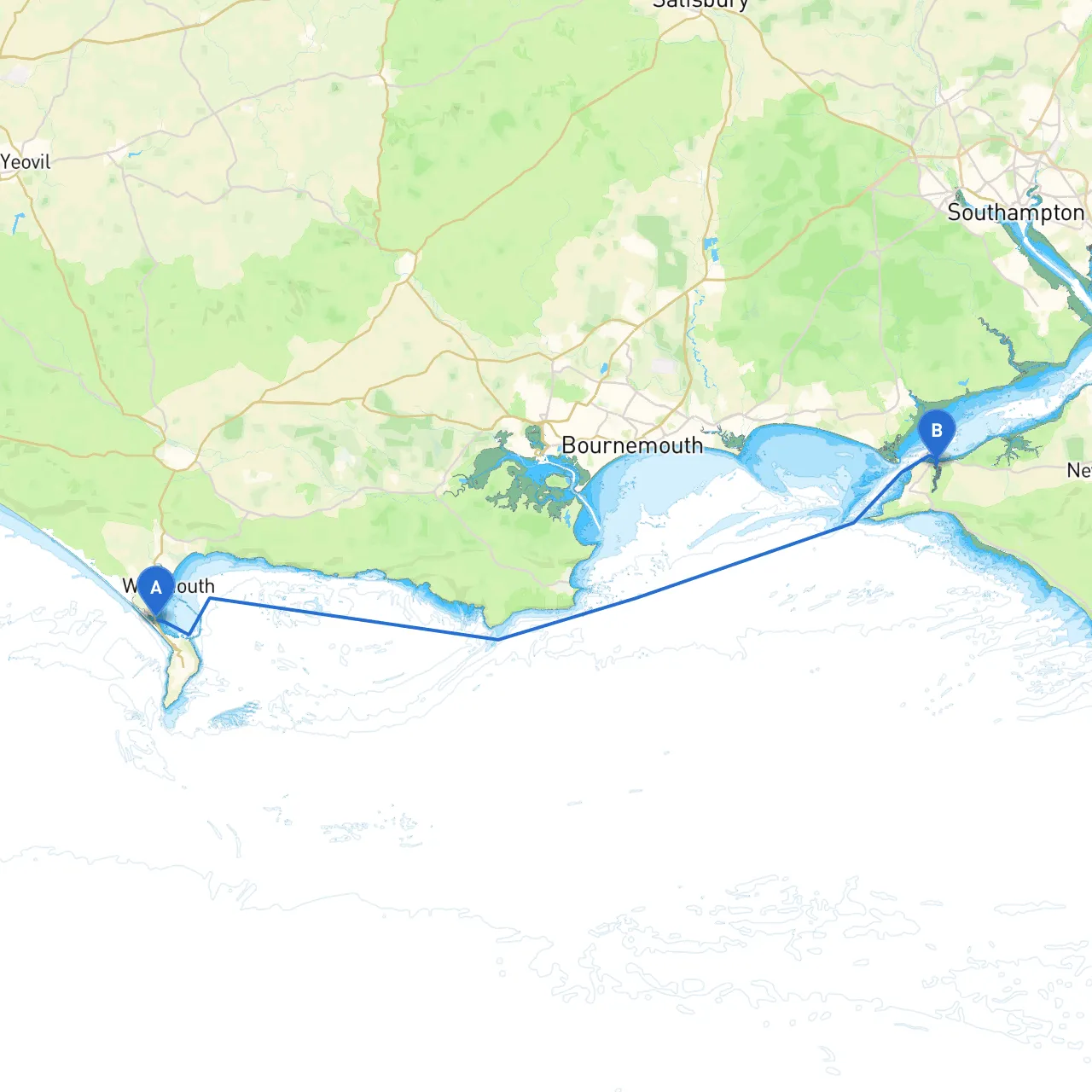

This route from Weymouth to Yarmouth offers a blend of scenic coastal cruising and opportunities to explore charming harbors and coves. It’s tailored for recreational boaters with a moderate level of experience, as the journey takes you through some busy shipping lanes and coastal waters that can be challenging at times. Ensuring safety first is essential, especially in the unpredictable weather you can encounter along this part of the southern coastline.
Starting Point: Weymouth, Dorset (50.5818° N, -2.4699° W) Weymouth is a bustling port with great amenities. Before departing, check the local weather and tide charts—it’s worth noting that a busy harbor like this can be tricky during peak times.
1. Initial Leg: Depart Weymouth through the harbor, navigating carefully past moored boats. The entrance to the harbor can be busy, so maintain a vigilant watch, especially for ferries and fishing vessels.
2. Navigating West: Once past the harbor, you’ll head west into Weymouth Bay. Keep an eye on the navigational aids such as the Weymouth Light (at the end of the pier) to ensure you’re on course. This bay provides excellent scenic views of the cliffs and the seaside town of Weymouth.
3. Chesil Beach: As you proceed, you’ll approach Chesil Beach, a unique and beautiful shingle beach that stretches for 18 miles. It forms a barrier between the mainland and the sea, creating a calm area behind it. Should weather conditions deteriorate, this area offers some shelter and a chance to explore the natural beauty of the beach.
4. Portland Harbor: Beyond Chesil Beach lies Portland Harbor. This is an ideal sheltered area to consider if the sea gets rough. The harbor is home to several sailing clubs and provides excellent facilities. You can take a break here and perhaps explore the fascinating history of the area—Portland Castle is just steps away on the island.
5. Navigational Aids: Be mindful of navigational buoys as you enter Portland Harbor and the adjacent waters. Look for the ‘Portland Bill’ lighthouse, a prominent maritime guide marking the transition into open waters.
6. Heading East: After leaving Portland Harbor, you will journey east toward the open waters of the English Channel. The channel can be busy with merchant and fishing vessels, so maintaining a lookout and adhering to the International Regulations for Preventing Collisions at Sea (COLREGs) is essential.
7. Passing Pekombe Sands: As you approach the area near Pekombe Sands, the waters can be trickier, particularly during a rising tide. Make sure to consult current tidal charts, and be aware of any shifting sands that can affect navigability.
8. Arrival at Yarmouth: Finally, you'll make your approach to Yarmouth, which has a relatively naiving entrance, marked by ample navigational buoys and mooring options. Once in, the harbor offers a welcoming atmosphere, with options for dining, shopping, and exploring the historical charm of the town.
This journey from Weymouth to Yarmouth encapsulates both the beauty and the challenges of coastal boating in southern England. It’s an ideal trip for the adventurous yet safety-conscious boater, offering a blend of tranquility, exploration, and vibrant coastal culture—all while respecting the inherent hazards of open water navigation. Make sure to plan appropriately, stay alert, and enjoy the unique experience this route provides!